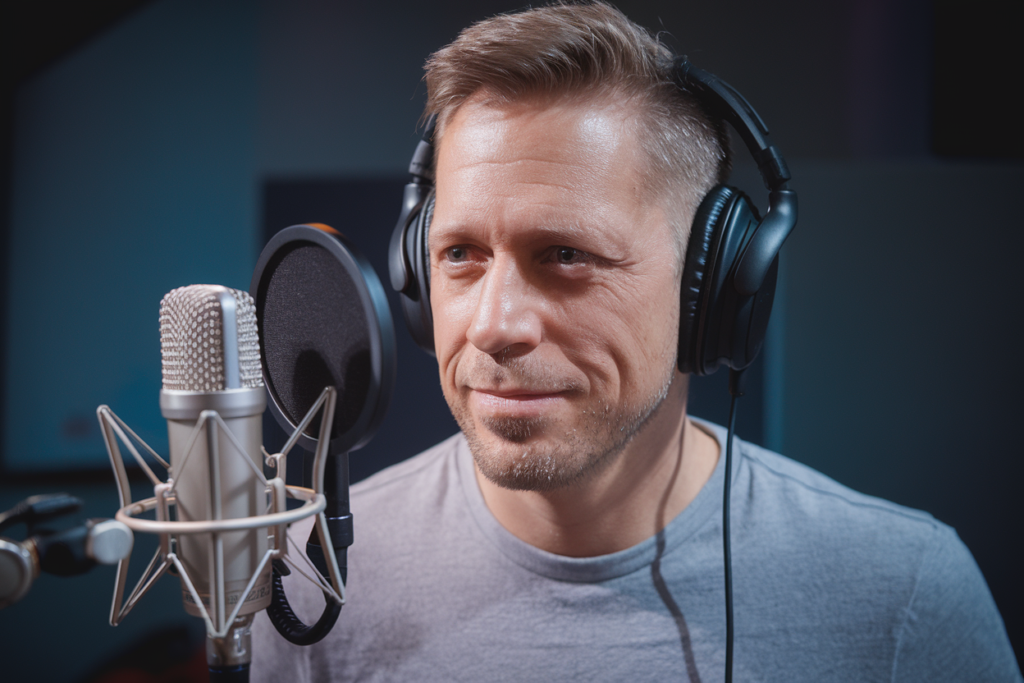Key Takeaways
- German Localization is Essential: Adapting video content for the German market involves more than just translation; it requires cultural understanding and relevance to connect with local audiences.
- Key Elements of Effective Localization: Successful localization includes cultural relevance, language precision, high-quality voiceovers, visual adaptation, and awareness of audience preferences.
- Comprehensive Localization Process: The localization process includes content analysis, accurate translation, cultural adaptation, voiceover casting, recording sessions, editing/synchronization, and quality assurance.
- Challenges in Localization: Be aware of challenges such as cultural sensitivity, language variations among dialects, technical constraints in adapting visuals, and budget considerations that can impact the localization effort.
- Benefits for Businesses: Proper German localization enhances audience engagement by creating relatable content while expanding market reach by breaking down language barriers and appealing to diverse demographics.
- Utilizing Tools and Technologies: Leverage translation software and professional services for accuracy along with quality subtitle and dubbing solutions to enhance viewer experience in localized video content.
Ever wondered why your video content isn’t hitting the mark in Germany? German localization is key to connecting with this diverse audience. It’s not just about translating words; it’s about adapting your message, tone, and visuals to resonate with local viewers.
In a country known for its rich culture and unique preferences, understanding these nuances can make or break your success. You want your videos to feel like they’re made for Germans by Germans—not just another foreign product. Let’s dive into how effective localization can transform your video strategy and help you engage audiences in Germany like never before.
Understanding German Localization
German localization for video content goes beyond mere translation; it requires a deep understanding of cultural nuances and local preferences. By adapting your message, tone, and visuals, you ensure that your videos resonate with German audiences on a personal level.
Importance of Localization in Video Content
Localization plays a crucial role in video content aimed at the German market. It enhances viewer engagement by making the material feel relevant and relatable. An authentic connection fosters trust and encourages viewers to absorb the information presented. When done correctly, localization can transform an ordinary video into an impactful experience that captivates audiences.
Key Elements of Effective Localization
Effective localization involves several key elements:
- Cultural Relevance: Tailoring content to reflect local customs, values, and humor creates familiarity.
- Language Precision: Beyond literal translations, using idiomatic expressions improves relatability.
- Voiceover Quality: Selecting voice talent who understand regional accents ensures authenticity.
- Visual Adaptation: Adjusting graphics or symbols to avoid misinterpretations is essential for clarity.
- Audience Preferences: Researching viewer habits helps determine appropriate pacing and style.
Remember that effective localization not only translates words but also conveys emotions and intent accurately.
The Process of German Localization
German localization involves several key steps to ensure your video content resonates with the local audience. It goes beyond mere translation, requiring a comprehensive approach that considers cultural context and viewer preferences.
Steps Involved in Localization
- Content Analysis: Review the original video for themes, messages, and visual elements. Identify aspects needing adaptation to fit German culture.
- Translation: Translate scripts accurately while ensuring language precision. Focus on conveying emotions and intent rather than just words.
- Cultural Adaptation: Adjust references, jokes, or idioms that may not resonate with German viewers. Use culturally relevant examples that enhance relatability.
- Voiceover Casting: Select appropriate voice talent for your project. The right voice artist can make a significant difference in how the message is received.
- Recording Voiceovers: Schedule sessions with skilled voice actors who understand the tone and style of your content. Quality recordings are crucial for maintaining engagement.
- Editing and Synchronization: Edit visuals and audio to ensure seamless integration between dialogues and actions on screen. Proper synchronization enhances overall viewer experience.
- Quality Assurance: Conduct thorough reviews of both audio and visual elements to catch any inconsistencies or errors before finalizing the project.
Challenges in Localizing Video Content
Localization often presents unique challenges that require careful handling:
- Cultural Sensitivity: Misunderstanding cultural nuances can lead to unintentional offense or miscommunication, negatively impacting viewer perception.
- Language Variations: Different dialects within Germany may affect word choice or phrasing when selecting voice talent, demanding attention to detail during casting.
- Technical Constraints: Adapting visuals without compromising quality poses a challenge, especially if timing must match localized audio precisely.
- Budget Considerations: Comprehensive localization can be resource-intensive; balancing quality with budget constraints remains essential.
Understanding these steps and challenges sets you up for success in creating impactful localized video content tailored specifically for German audiences. Effective localization transforms ordinary videos into engaging experiences that connect meaningfully with viewers across Germany’s diverse landscape.
Benefits of German Localization for Businesses
German localization offers businesses numerous advantages, particularly when dealing with video content. It enhances audience engagement and expands market reach, creating a stronger connection with local viewers.
Enhancing Audience Engagement
Effective localization goes beyond mere translation; it captures the essence of your message in a way that resonates with German audiences. By adapting visuals, tone, and cultural references, you create content that feels relatable and authentic. This emotional connection encourages viewers to engage more deeply with your videos. When using local voiceover talent, for example, the nuances in dialects or accents can significantly impact how messages are received. A well-cast voice artist brings authenticity and familiarity to your brand’s identity.
Expanding Market Reach
Localizing video content opens doors to new markets by breaking down language barriers. The German-speaking population is substantial, making it essential for global brands to tailor their messaging effectively. Customized content attracts attention from various demographics within Germany and increases shareability across social media platforms. With localized voiceovers that reflect regional preferences and cultural contexts, your business can appeal to a wider audience while enhancing brand loyalty among existing customers.
Investing in German localization not only makes your video content more accessible but also transforms it into a powerful tool for growth and engagement within Germany’s diverse marketplace.
Tools and Technologies for Localization
Localization requires effective tools and technologies to ensure that video content meets the expectations of German audiences. Leveraging the right resources enhances the quality and efficiency of your localization efforts.
Translation Software and Services
Translation software simplifies the process of converting source content into German. These tools often include features like machine translation, glossaries, and memory databases to maintain consistency across projects. Utilizing professional translation services ensures accuracy, cultural relevance, and nuance in language use. Many agencies offer specialized translations that cater specifically to video scripts, helping you adapt tone and context seamlessly.
Subtitle and Dubbing Solutions
Subtitles provide an accessible way to engage viewers who prefer reading along with audio. Quality subtitle solutions allow for precise timing synchronization with visuals while accommodating character limits for clarity. Dubbing involves replacing original dialogue with voiceovers in German, requiring skilled voice talent who can convey emotion effectively. Selecting experienced voice actors guarantees authenticity; their ability to match tone and inflection creates a more immersive experience for your audience.
Investing in these tools not only streamlines your localization process but also significantly boosts viewer engagement by delivering high-quality content tailored specifically for the German market.
Conclusion
Investing in German localization for your video content is crucial for connecting with local audiences. It’s not just about translating words; it’s about creating an experience that reflects cultural nuances and resonates on a deeper level. By focusing on authenticity and relevance you can significantly enhance viewer engagement.
Utilizing the right tools and skilled talent ensures your videos are tailored to meet the expectations of German viewers. This thoughtful approach transforms ordinary content into impactful experiences that build trust and foster loyalty among your audience. Embrace the power of effective localization to unlock new opportunities within Germany’s dynamic market.
Frequently Asked Questions
What is German localization in video content?
German localization involves adapting video content for German audiences, going beyond mere translation. It includes adjusting the message, tone, visuals, and cultural references to ensure relevance and relatability.
Why is cultural understanding important for German localization?
Understanding Germany’s rich culture helps create authentic connections with viewers. It ensures that localized videos resonate emotionally and meaningfully with the audience, fostering trust and engagement.
What are the key steps in the German localization process?
The key steps include content analysis, accurate translation, cultural adaptation, voiceover casting, recording voiceovers, editing and synchronization, and quality assurance to ensure impactful results.
What challenges can arise during video localization?
Challenges may include cultural sensitivity issues, varying language dialects or slang, technical constraints related to video formats or platforms, and budget limitations impacting resource allocation.
How does German localization benefit businesses?
Effective localization enhances audience engagement by making content relevant. It expands market reach by breaking down language barriers while fostering emotional connections that encourage viewer loyalty.
What tools are essential for successful localization?
Essential tools include translation software for accuracy, subtitle solutions for accessibility, and dubbing services with skilled voice talent to create an immersive experience tailored for German viewers.







